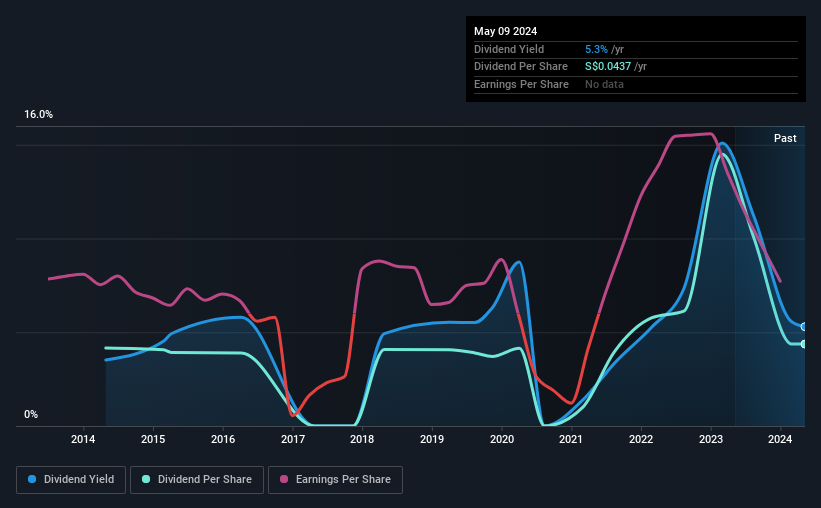Uni-Asia Group (SGX:CHJ) Is Due To Pay A Dividend Of $0.022
The board of Uni-Asia Group Limited (SGX:CHJ) has announced that it will pay a dividend of $0.022 per share on the 31st of May. The yield is still above the industry average at 5.3%.
See our latest analysis for Uni-Asia Group
Uni-Asia Group's Earnings Easily Cover The Distributions
Impressive dividend yields are good, but this doesn't matter much if the payments can't be sustained. Prior to this announcement, Uni-Asia Group's dividend was comfortably covered by both cash flow and earnings. This indicates that a lot of the earnings are being reinvested into the business, with the aim of fueling growth.
If the trend of the last few years continues, EPS will grow by 29.5% over the next 12 months. If the dividend continues on this path, the payout ratio could be 56% by next year, which we think can be pretty sustainable going forward.
Dividend Volatility
The company's dividend history has been marked by instability, with at least one cut in the last 10 years. The annual payment during the last 10 years was $0.0306 in 2014, and the most recent fiscal year payment was $0.0322. Dividend payments have been growing, but very slowly over the period. The dividend has seen some fluctuations in the past, so even though the dividend was raised this year, we should remember that it has been cut in the past.
The Dividend Looks Likely To Grow
With a relatively unstable dividend, it's even more important to see if earnings per share is growing. Uni-Asia Group has impressed us by growing EPS at 29% per year over the past five years. The company doesn't have any problems growing, despite returning a lot of capital to shareholders, which is a very nice combination for a dividend stock to have.
We Really Like Uni-Asia Group's Dividend
Overall, we think that Uni-Asia Group could be a great option for a dividend investment, although we would have preferred if the dividend wasn't cut this year. The cut will allow the company to continue paying out the dividend without putting the balance sheet under pressure, which means that it could remain sustainable for longer. All in all, this checks a lot of the boxes we look for when choosing an income stock.
Companies possessing a stable dividend policy will likely enjoy greater investor interest than those suffering from a more inconsistent approach. Still, investors need to consider a host of other factors, apart from dividend payments, when analysing a company. For instance, we've picked out 4 warning signs for Uni-Asia Group that investors should take into consideration. Is Uni-Asia Group not quite the opportunity you were looking for? Why not check out our selection of top dividend stocks.
Have feedback on this article? Concerned about the content? Get in touch with us directly. Alternatively, email editorial-team (at) simplywallst.com.
This article by Simply Wall St is general in nature. We provide commentary based on historical data and analyst forecasts only using an unbiased methodology and our articles are not intended to be financial advice. It does not constitute a recommendation to buy or sell any stock, and does not take account of your objectives, or your financial situation. We aim to bring you long-term focused analysis driven by fundamental data. Note that our analysis may not factor in the latest price-sensitive company announcements or qualitative material. Simply Wall St has no position in any stocks mentioned.

 Yahoo Finance
Yahoo Finance 
